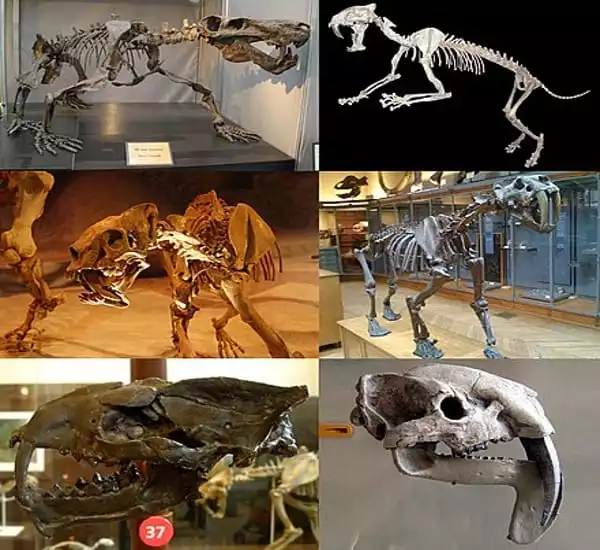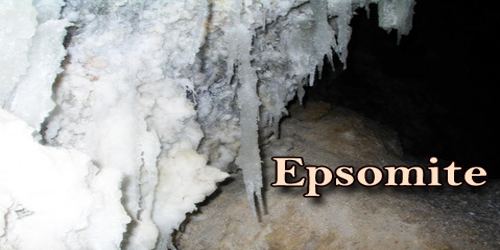A dangerous bobcat-sized species prowled the woodlands of what is now San Diego around 42 million years ago. It was a hypercarnivore, built to eat meat and practically just meat, unlike most mammals at the time.
Meet Diegoaelurus vanvalkenburghae, a newly identified species of the now-extinct Machaeroidinae family, thought to be the first mammals with saberlike fangs and strong slicing teeth.
Diegoaelurus vanvalkenburghae was much more than a saber-toothed cat. It was also one of the first hypercarnivorous mammals, which means it only ate meat (if its teeth are any indication). Its 42-million-year-old fossilized jawbone was just another item in a museum drawer until paleontologists Shawn Zack, Ashley Poust, and Hugh Weaver of the University of Arizona and the San Diego Natural History Museum discovered it belonged to an entirely new species. They collaborated on a study that was recently published in Peerj. Poust deduced that the jawbone belonged to a saber-toothed creature based on its teeth.
Until now, only a few dozen other machaeroidine fossils have been described, the majority of which are from Wyoming, with a few from Utah and Asia. Paleontologists identified this new predator, described in PeerJ, using a 71.5-millimeter-long lower jawbone with teeth discovered in a fossil bed in San Diego County.
We know from the slicing teeth that this animal was a devoted meat eater and couldn’t have survived without hunting. It possessed serrations on the lower teeth, which match the serrations on the enormous fangs and are found in saber-toothed mammals, as well as a gigantic bony flange, which was an extension of the chin to protect the saber teeth when the mouth was closed.
Shawn Zack, Ashley Poust, and Hugh Weaver
“We know from the slicing teeth that this animal was a devoted meat eater and couldn’t have survived without hunting,” she explained to SYFY WIRE. “It possessed serrations on the lower teeth, which match the serrations on the enormous fangs and are found in saber-toothed mammals, as well as a gigantic bony flange, which was an extension of the chin to protect the saber teeth when the mouth was closed.”
The fossil gives away that the creature had long saberlike canine teeth because the bony chin is downturned, to protect the fangs, and there is a gap in the lower teeth to fit them, says Ashley Poust, a paleontologist at the San Diego Natural History Museum. The saberlike canines themselves weren’t recovered.
Diegoaelurus, despite its feline appearance, was not a cat. The creature was a machaeroidine (machero- literally means knifelike). Even while there is considerable overlap, their teeth stand out when compared to those of cats, which evolved later. It is thought to be one of the earliest mammals to have been so reliant on meat that it would have died if it did not hunt. Machaeroidines, now extinct, were the first mammals to develop saber teeth, which were particularly effective for biting thick-skinned ungulates, such as rhinos, tapirs, and horses, who lived during the Eocene epoch. It may have even targeted primates.

“Those huge teeth were either utilized to bite into the throat of the animal or to rip and shred the flesh,” Poust explains. “This fossil, in particular, helps us comprehend what the entire food web would’ve looked like.” … Now we know that there could have been a crazed saber-toothed animal pursuing primates in the treetops or tapirs in the leaves below.”
Today’s hypercarnivore mammals include anything from gigantic polar bears and deadly tigers to your cuddly (or not) home cat. However, that lifestyle was unusual for predators of the Eocene Epoch, which ended roughly 34 million years ago, and there aren’t many of these carnivores known from that time.
So D. vanvalkenburghae provides an early glimpse into how animals independently evolved the ability to slice flesh with ease. Such daggerlike fangs have turned up in a wide range of ancient animals from anchovies to the much more recent saber-toothed cats such as Smilodon, which appeared on Earth millions of years after D. vanvalkenburghae went extinct.
Even without a complete skull (like the Smilodon next to it in the photo above, which is the poster child of saber-toothed animals), the teeth on that jaw that identified it as a machaeroidine were enough to determine it would have had considerably larger saber teeth near the front of its upper jaw. Consider Diegoaelurus’ jaws to be a smaller, but no less horrific, counterpart of Smilodon’s. Its chin is likewise more prominent, possibly to aid the smaller predator in grasping something writhing between its teeth. Smilodon did not appear until 2.5 million years ago.
So, how did such adaptations emerge, and if catlike creatures with flashing saber teeth were apex predators, why did they all finally become extinct? The fact that there is nothing alive to compare them to complicates the hunt for an answer. It’s probable that their prey died out during the last Ice Age. That still doesn’t explain why much older forms, such as Diegoaelurus, were extinct.
















